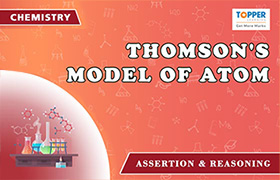CBSE Class 9 Answered
Cathode ray experiment:
An electrical discharge is passed through partially evacuated tubes, known as cathode ray discharge tubes. A sufficiently high voltage is applied across the electrodes. Current starts flowing through a stream of particles moving in the tube from the negative electrode (cathode) to the positive electrode (anode). These were called cathode rays or cathode ray particles.
The flow of current from cathode to anode was further checked by making a hole in the anode and coating the tube behind anode with phosphorescent material zinc sulphide. When these rays, after passing through anode, strike
the zinc sulphide coating, a bright spot on the coating is developed.
The results of these experiments are summarised below.
(i) The cathode rays start from cathode and move towards the anode.
(ii) In the absence of electrical or magnetic field, these rays travel in straight lines.
(iii) In the presence of electrical or magnetic field, the behaviour of cathode rays are similar to that expected from negatively charged particles, suggesting that the cathode rays consist of negatively charged particles, called electrons.






